The Marines converge on White Beaches. This "aerial" perspective shows just how much cover the cane fiels would provide the Japanese if they decide to make their stand in the cave complex.
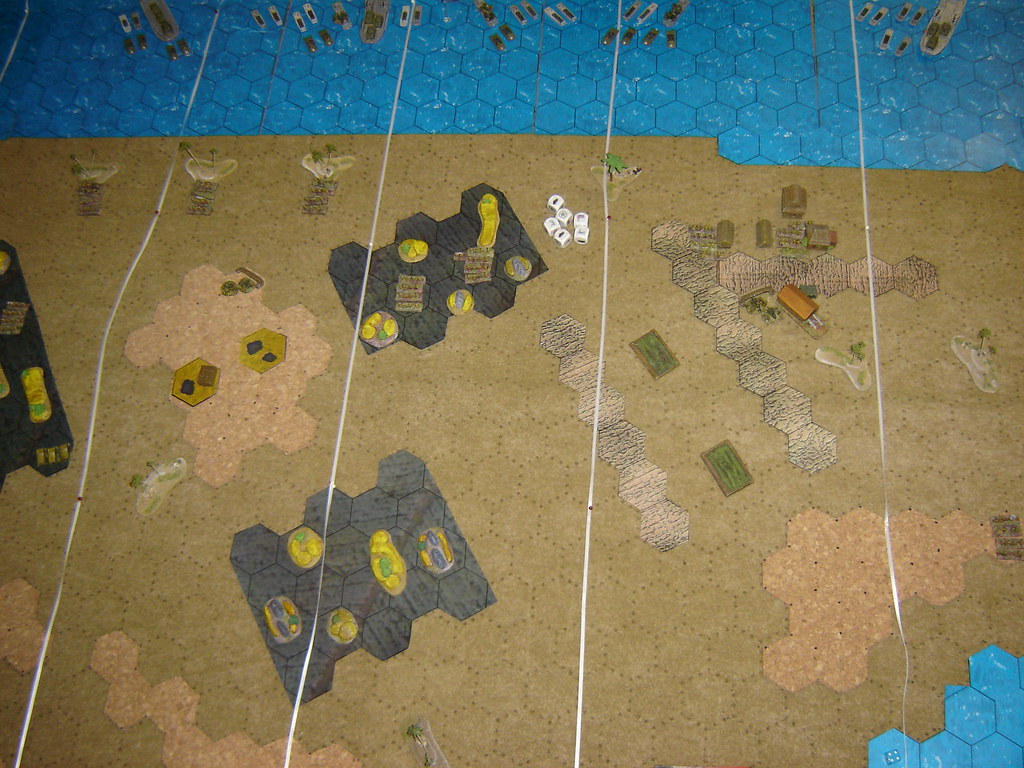
Corsair strafes Japanese infantry in jungle. Despite some early successes the air unit was shot down over the hills and another sortie was never launched.

Marines storm off landing craft to take airstrip. Here the Japanese would be under huge pressure, with their initial counter-attack on the other side of the airstrip being wiped out by a well-timed (and well-aimed) naval salvo.
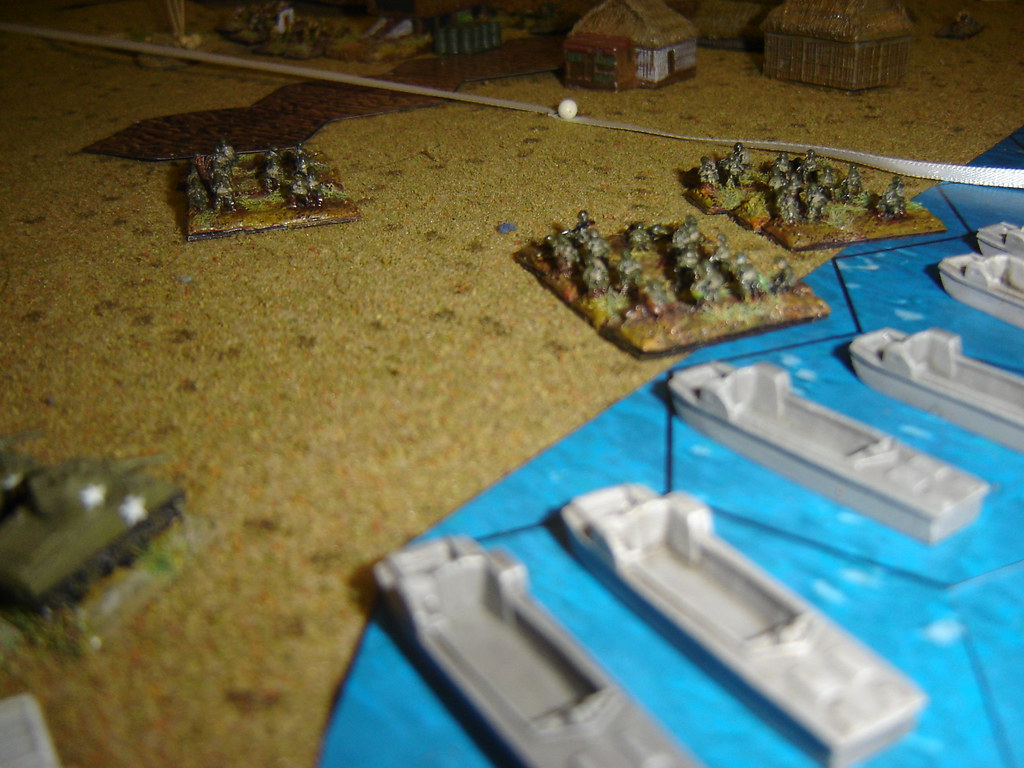
Japanese counterattack catches Marine armour. The American armour unit made initial inroads, pushing Japanese infantry back into the cane fields, but is then caught and destroyed by a supporting attack. Colonel Ogata leads another unit to prevent a nearby Marine battalion from aiding the beleaguered tankers.
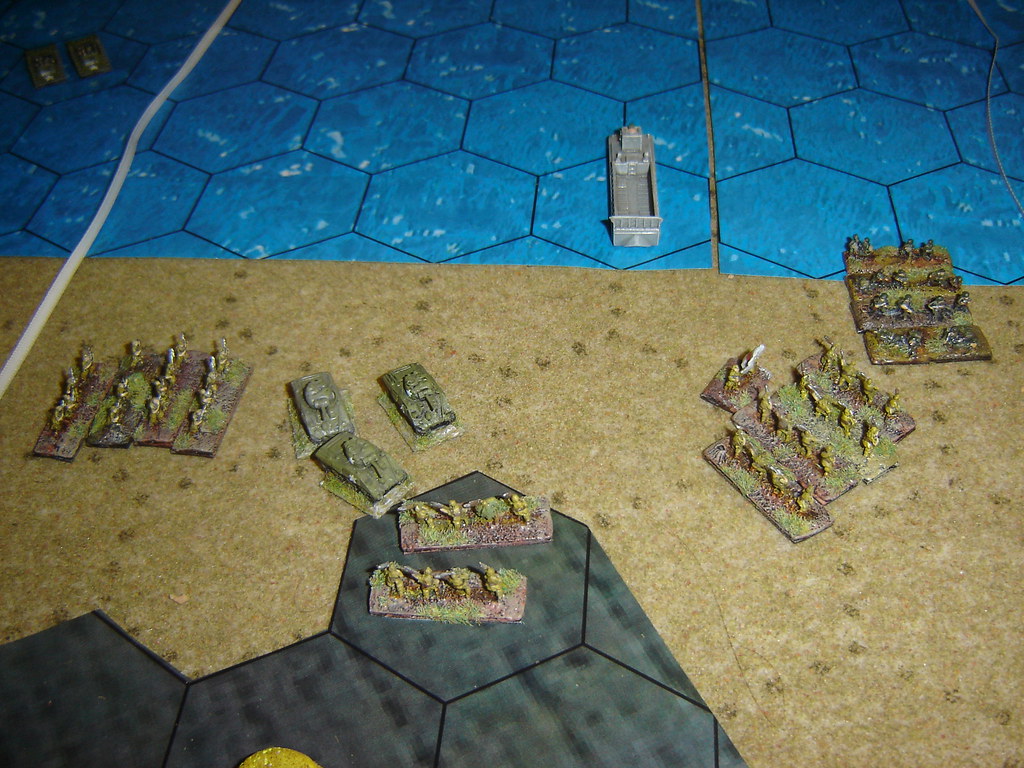
Japanese tanks ready for action as the Marines come ashore in strength. With infantry backing them up through the jungle and with artillery support, the Japanese are confident at this end of the island.
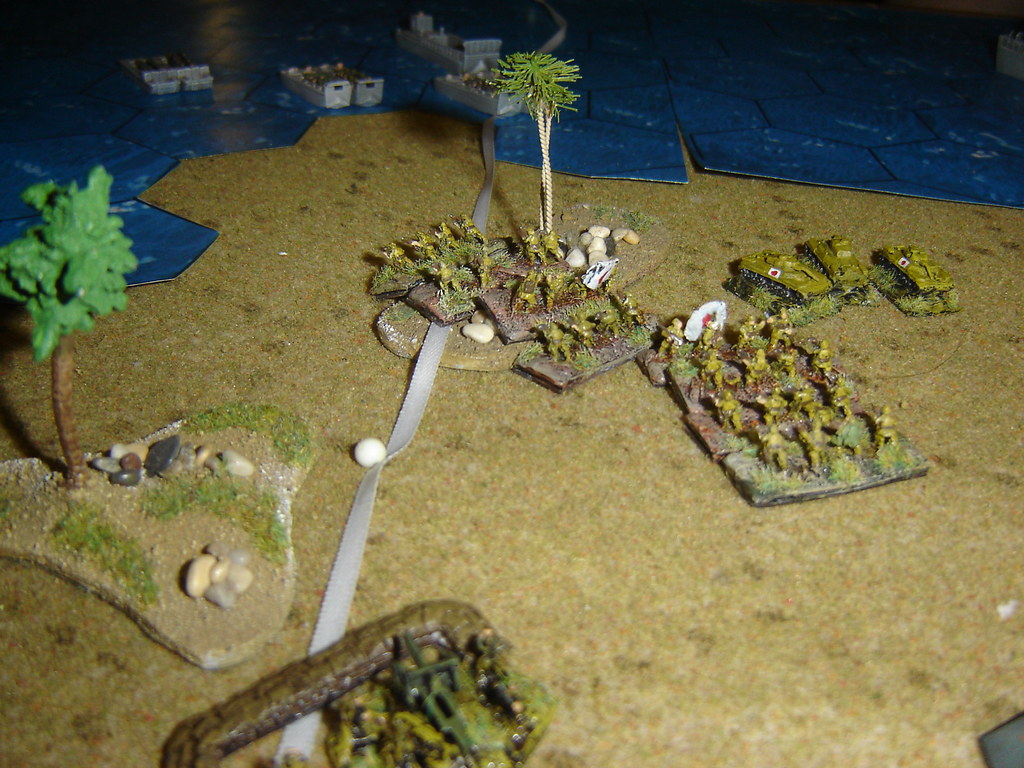
Japanese lurk in jungle to threaten Marine advance on the airstrip. A series of well-timed manoeuvres would see the Americans decimated here and without armour to back them up.
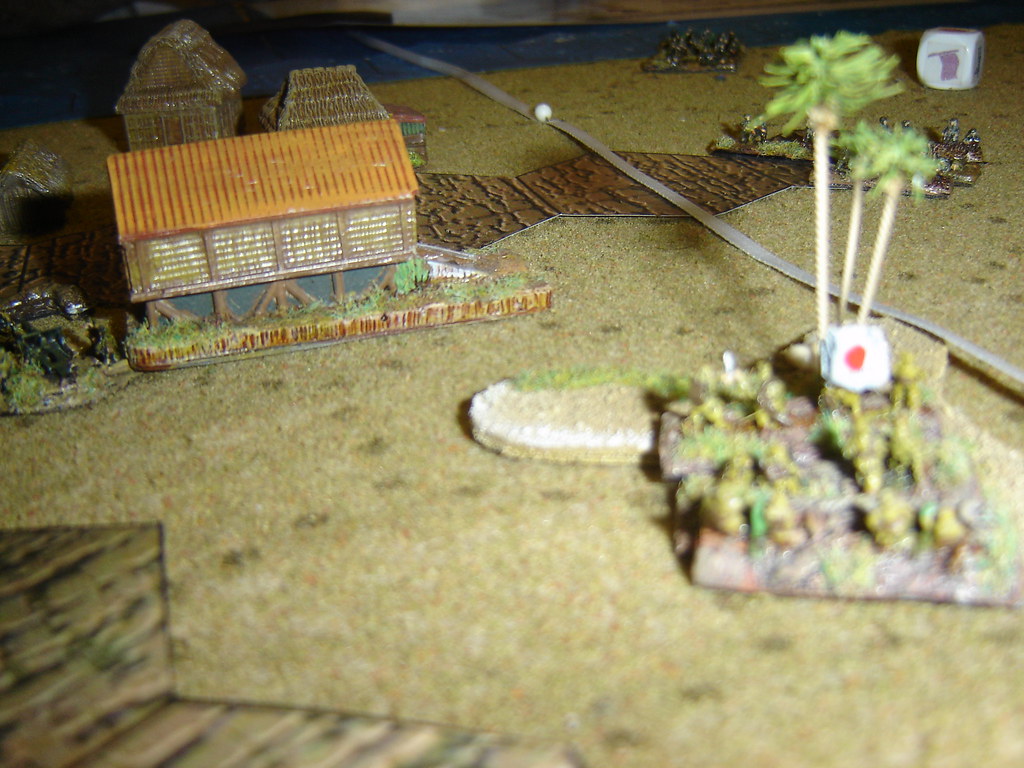
Presence of Marine General bolsters centre. With the Big Guns having come ashore, the Americans are in a position to do real damage to the Japanese in the centre.

Night falls, but the Japanese are not prepared for a night attack. Marines land on Faila San Hila Point, and begin to work their way towards their objectives. The long night actually suits the Americans, as it negates the Japanese advantage in artillery and prevents Japanese units from engaging in long-range firefights from cover.
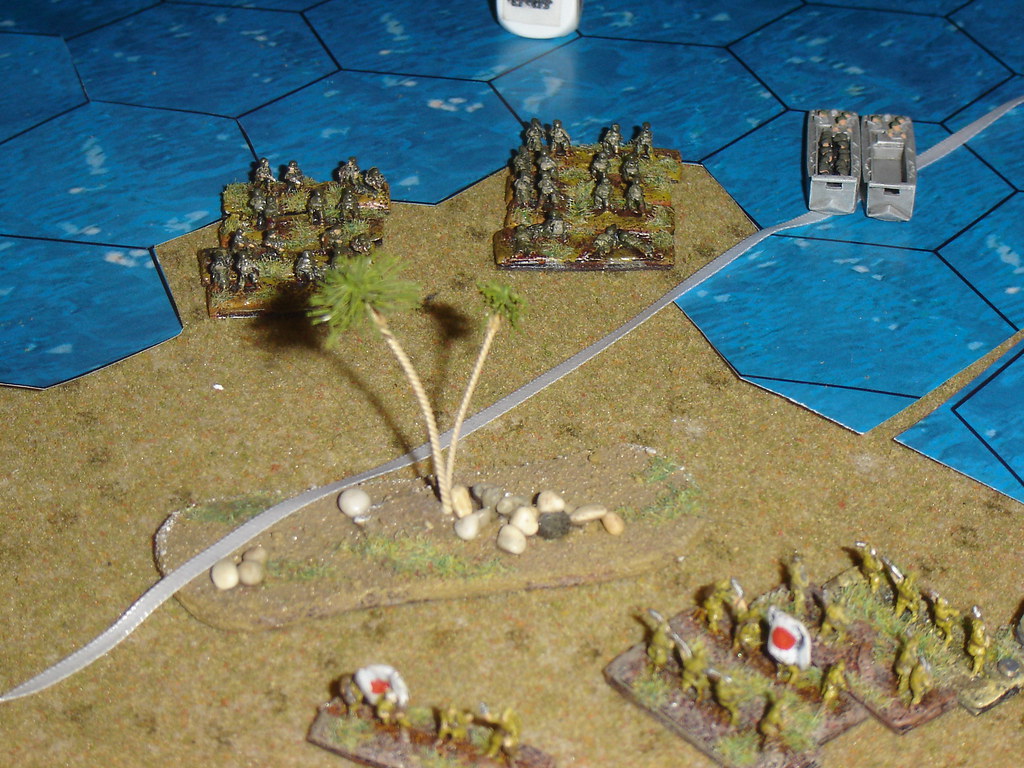
Firefight rages in airstrip buildings. The depleted lone Japanese infantry battalion at the airstrip holds out but is eventually driven off. The subsequent assault on the artillery on the other side of the airstrip is unsuccesful and the Marines take point-blank artillery fire.
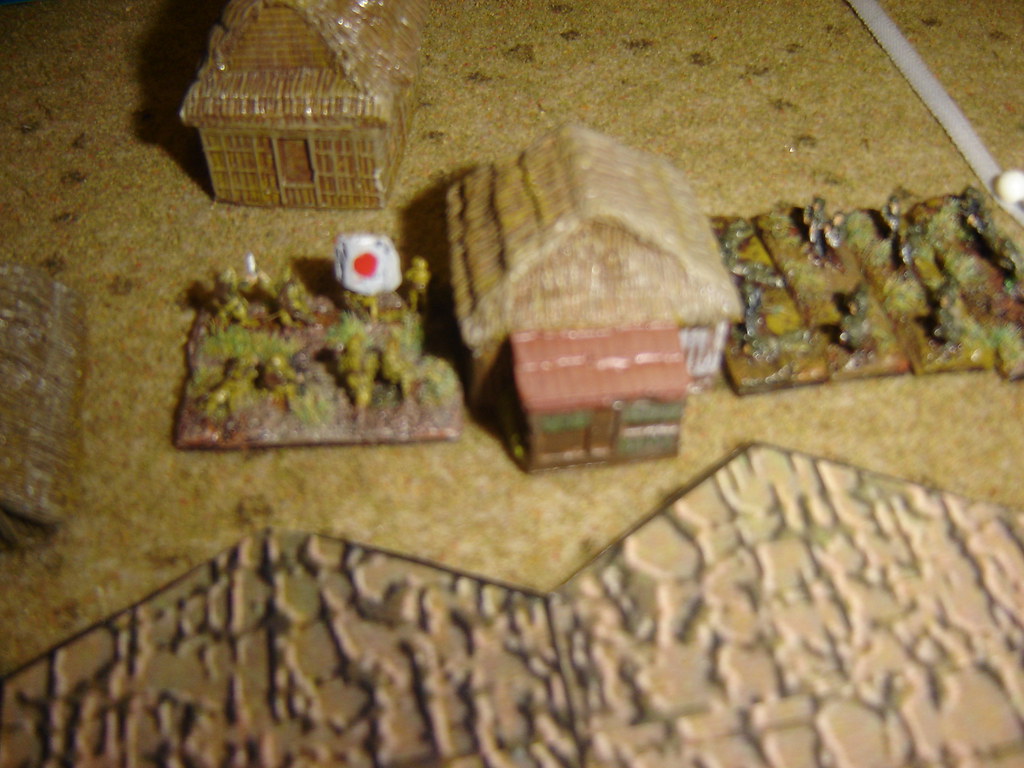
Marines take ground and push towards emplaced artillery. After their initial success here, the Marines begin to feel the effects of close-in assault by the Japanese tanks. Previously kept at arms length by the Marine armour, but now freed up. They range up and down the shore driving unfortunate marines into the night-time surf.
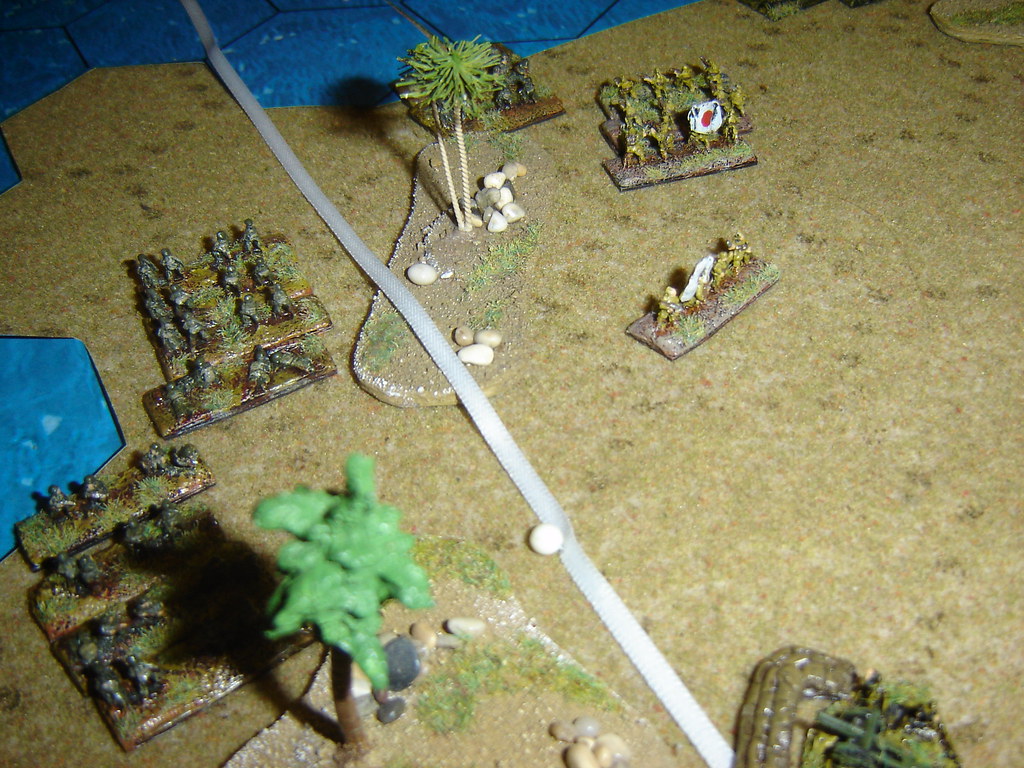
Marines caught in crossfire. A final concerted attack on the marine battalion in the centre ends in its destruction along with the death of General Cates brings the defeat of the Marine task force as dawn breaks.
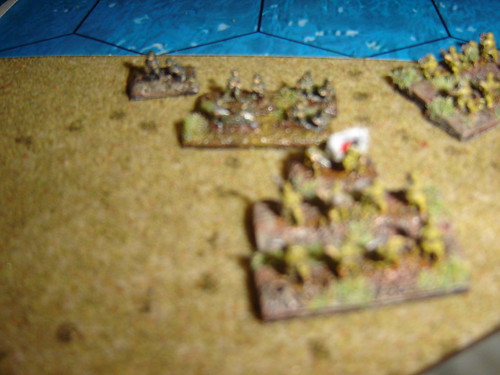
An emphatic victory for the Japanese 21-6. As the game progressed it never seemed that decisive, and many Japanese units were on their last legs. One vital factor was the emphasis the Japanese placed on taking the Marine armour out of the game, allowing them to play to their advantages in close assault in the open.
No comments:
Post a Comment